Free Shipping on orders of $49+ | Signup for Direct Rewards
Free Shipping on orders of $49+ | Free Store Pickup | Signup for Direct Rewards
Free Shipping on orders of $49+ | Signup for Direct Rewards
Free Shipping on orders of $49+ | Free Store Pickup | Signup for Direct Rewards

Make your diving adventures better by learning about the sealife you encounter underwater. This guide provides fun and informative information on Florida's local reef sea life. It covers various fish species, offering insights into their unique features and habits. Whether you're an experienced diver or a beginner, this guide is a useful tool to learn more about the marine life in Florida waters and make your underwater exploration more fulfilling.
Butterflyfish did not get their name by having wing-like fins or a metamorphic growth process but rather their unique patterns and varied colors like the wings of a butterfly. There are four types of butterflyfish commonly seen on Florida reefs, foureye, spotfin, banded, and reef. One common trait all these butterflyfish have is a vertical band across their eye. Some lines are more noticeable than others but this helps differentiate them from other types of fish.
Like most humans, butterflyfish prefer to be in a monogamous relationship, which means one partner. The courtship process is rather cute and extensive. The couple circle each other, each fish head to tail until one breaks the cycle and swims upwards. Together they release 3 to 4 thousand larvaes. These larvae, also known as tholichthys, will settle on the sea floor and hatch within a day. Whether snorkeling or scuba diving, you can spot these beautiful fish wherever there is healthy coral. Butterflyfish are one of the few fish that eat hard corals as a main source of nutrition. Like most reef fish, Butterflyfish have compressed bodies that allow them to easily navigate coral reefs, whether for coverage from predators or searching crevices for food.

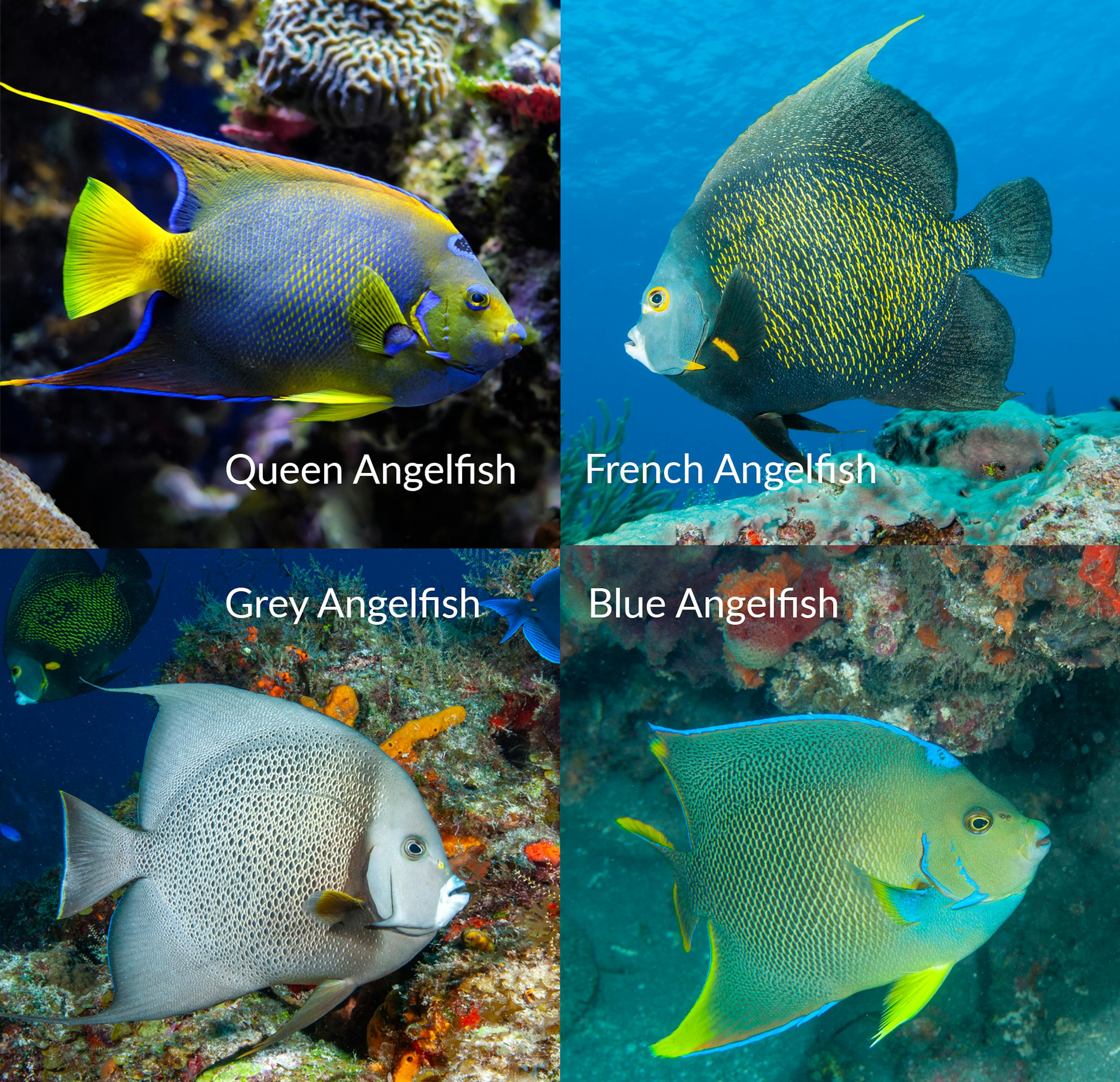
The angelfish got its name because of its silhouette; when turned to the side it resembles the shape of an angel. Young angelfish act as cleaners for various fish, eating ectoparasites off them. These helpful fish create "cleaning stations," promoting the health and abundance of the ocean ecosystem. When juvenile, the french and the gray angelfish look almost identical. Both have dark bodies with yellow vertical bars but the key difference is the tail. The grey angelfish has a square tail with a white edge while the french’s tend to be round. The blue and queen angelfish both share yellow and blue coloration but can be distinguished between the two. However, the queen angelfish is easily differentiated by a unique dark blotch on its head. That blotch represents a crown giving the fish status as “queen” angelfish. Long live the queen! These fish are curious and brave and often approach divers, making them a favorite among underwater photographers. Usually in pairs, you can catch these fish swimming between depths ranging from 2 to 30 meters near reef habitats. Coral reefs not only provide protection but an abundance of food.
While diving and enjoying the underwater scenery, you might catch sight of a tubular fish gracefully circling the reef. That could be a great barracuda. It is a native predator in our Florida waters. Great barracudas are easily recognizable by their streamlined shape, silver body, and prominent mouth with sharp teeth. Because of their body shape, great barracudas are known for their speed and agility. They can grow to be 6 feet long and reach speeds of up to 35 mph, making them incredible ambush hunters. If you come across one when swimming, don't fret, great barracudas generally don't bother humans.


Parrotfish is a favorite among water enthusiasts for its beautiful colors and uncommon swimming style. Young parrotfish are constantly shifting in color, making it hard to identify between the species. Parrotfish can display a combination of bright shades of blue, green, yellow, and pink. Unlike most fish, parrotfish swim with their pectoral fin instead of their caudal fin (tail). Their bodies are typically robust and elongated and their iridescent scales are hard to miss.
Interestingly, most species of parrotfish are protogynous sequential hermaphrodites which means they can undergo sex reversals. They do this if it is needed in their social structure to boost the population.
You can easily spot parrotfish not just by how they swim but also by their mouths. They have fused teeth that form a beak. They use these parrot-like beaks to scrape coral and algae from rocks. The fish get their nourishment from zooxanthellae living within the coral polyps, not the coral itself. After processing the coral through their digestive system, parrotfish release it as white sand. Yep! That's right, sand. A single parrotfish can produce hundreds of pounds of white sand each year. So the next time you’re walking along the white sandy beach think about how the parrotfish help maintain a diverse and healthy coral reef ecosystem and not how you may be sinking your toes into fish poop!
Porcupinefish are adorably dangerous and easily recognizable. They have a round body covered in spines, typically in brown, gray, or olive colors, along with big eyes and a small yet powerful mouth. When threatened, they can puff up, using both their ability to inflate and their spikes against predators. It's common for people to mistake them for pufferfish, but unlike pufferfish, porcupinefish have visible spikes. These shy creatures tend to retreat when approached by divers and are often found in sheltered areas such as caves, reefs, or wrecks. Being nocturnal predators, porcupinefish are more likely to be spotted at night.
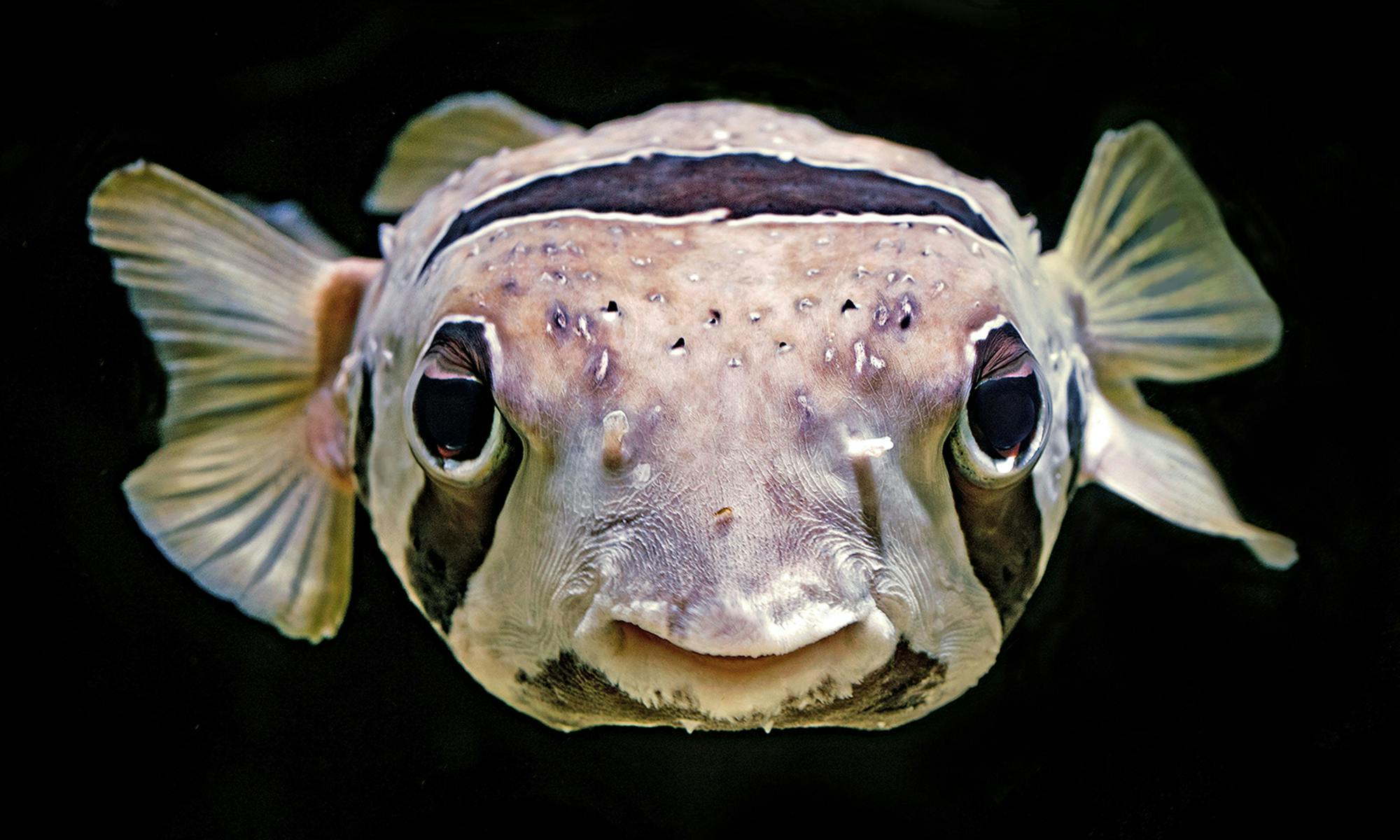

Surgeonfish are also referred to as tang fish. Surgeonfish are known for their eye-catching, bright colors, like the blue tang. Docterfish tang is another type of surgeonfish with multiple dark vertical stripes running along its teal-blue body. These pancake-shaped herbivores play a vital role in protecting the coral by feeding on the algae preventing it from overtaking the reef. Surgeonfish can be found in shallow waters in schools of five or more.
They have sharp, retractable spines on both sides near their tail base, resembling a scalpel, hence the name "surgeon” fish. These spines can be venomous and are used to protect themselves against predators. When threatened, surgeonfish will thrash side to side, to cut and deter potential dangers.
Sergeant majors are commonly seen in local waters. With a name like that, you would think this fish has some level of authority in the ocean but Sergeant Majors are a relatively small species of damselfish, known for their distinct appearance. Sergeant majors grow up to 8 inches and look the same from juvenile to full maturity. It has a compressed body with vibrant colors, predominantly yellow at the top and fading to a light blue, white belly. It gets its name from the black vertical bars along its body, resembling a military sergeant major's badge. You may spot some bright blue or purple on the edge of their fins highlighting their appearance. Despite their small size, they are quick to wage war. Sergeant Majors are known to be quite aggressive. Male are not afraid to chase off larger fish from their eggs and space. Sergeant majors do form large schools near coral reefs and establish hierarchies within them. Their colors can intensify based on social interactions; for example, dominant sergeant majors will display more vivid shades to assert their status.

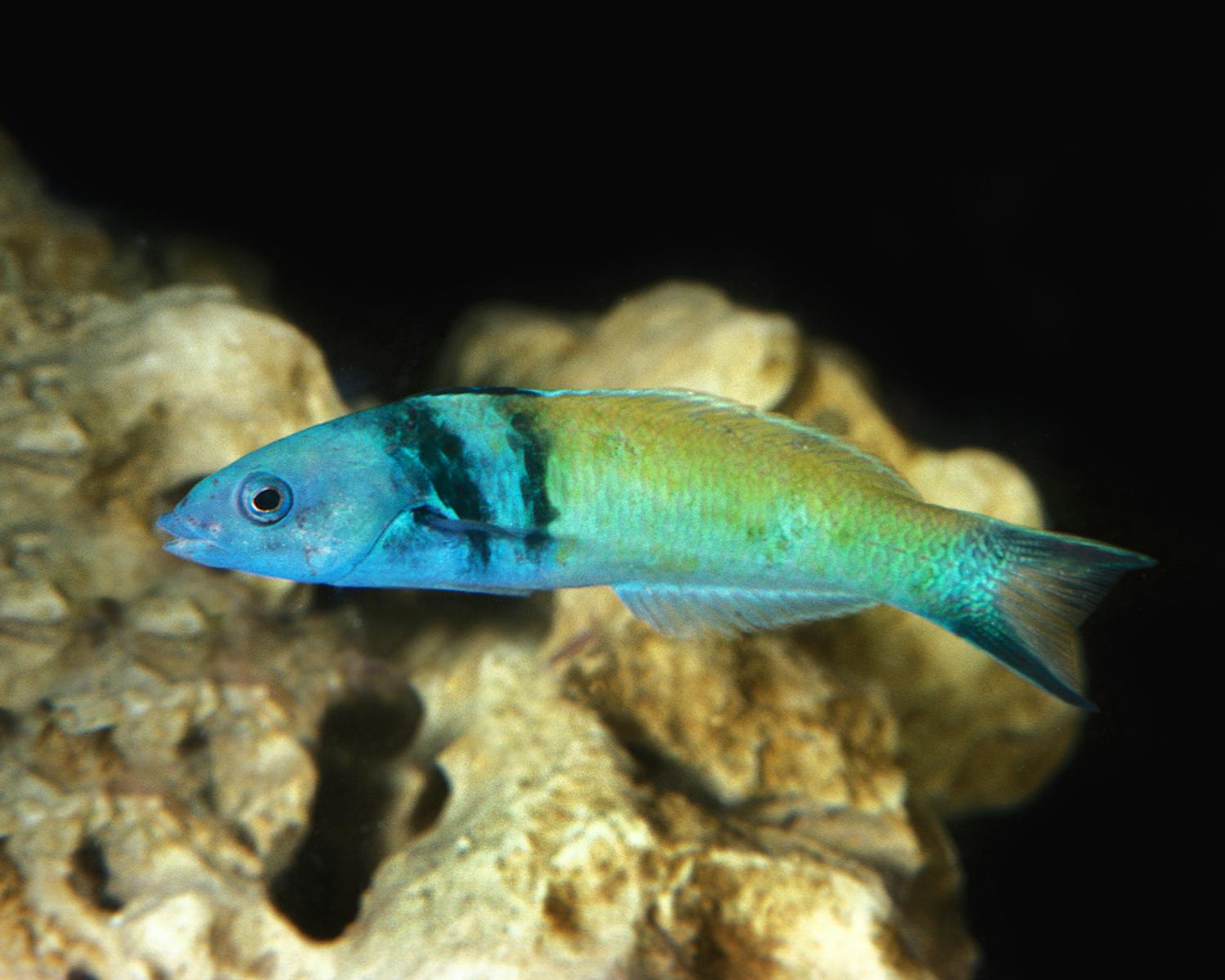
When scuba diving or snorkeling over a coral reef and a large school of colorful streamlined fish pass by, it's probably a group of wrasses. Their elongated bodies and vibrant colors easily distinguish them. There are many different types of wrasse species like the bluehead, yellowhead, clown, and creole wrasse. But did you know that hogfish, often referred to as Hog Snapper, is actually a wrasse? The hogfish’s first three spines of its dorsal fin are extremely elongated and they have a long pig-like snout.
Wrasses have some similar traits to parrotfish. For instance, wrasse primarily use their pectoral fins to swim instead of their tail. Also, most species of wrasse are protogynous hermaphrodites, which means they can perform sex reversals to regulate the population.
Certain wrasse species act as cleaners by consuming dead tissue and parasites from larger fish. This creates a cooperative relationship among sea creatures, where one receives teeth cleaning while the other enjoys an effortless meal.
Grunts are among the most commonly encountered fish when exploring the coral reefs or wrecks in Florida. There are four main types of grunts found in Florida’s water: sailor’s choice, white, bluestriped, and french grunts. These fish are cautious and tend to seek shelter under overhead structures when divers approach. Grunts earned their name from the pig-like grunt sound produced when they grind their teeth. While closely related to snappers, grunts have teeth in their throat and a more notched tail. Snorkelers won't spot them easily, as they reside around 30 meters underwater. Grunts stay close to reefs during the day, venturing out for food at night and returning to the reef safety before sunrise. Larger grunts often are the first to leave and the last to return.
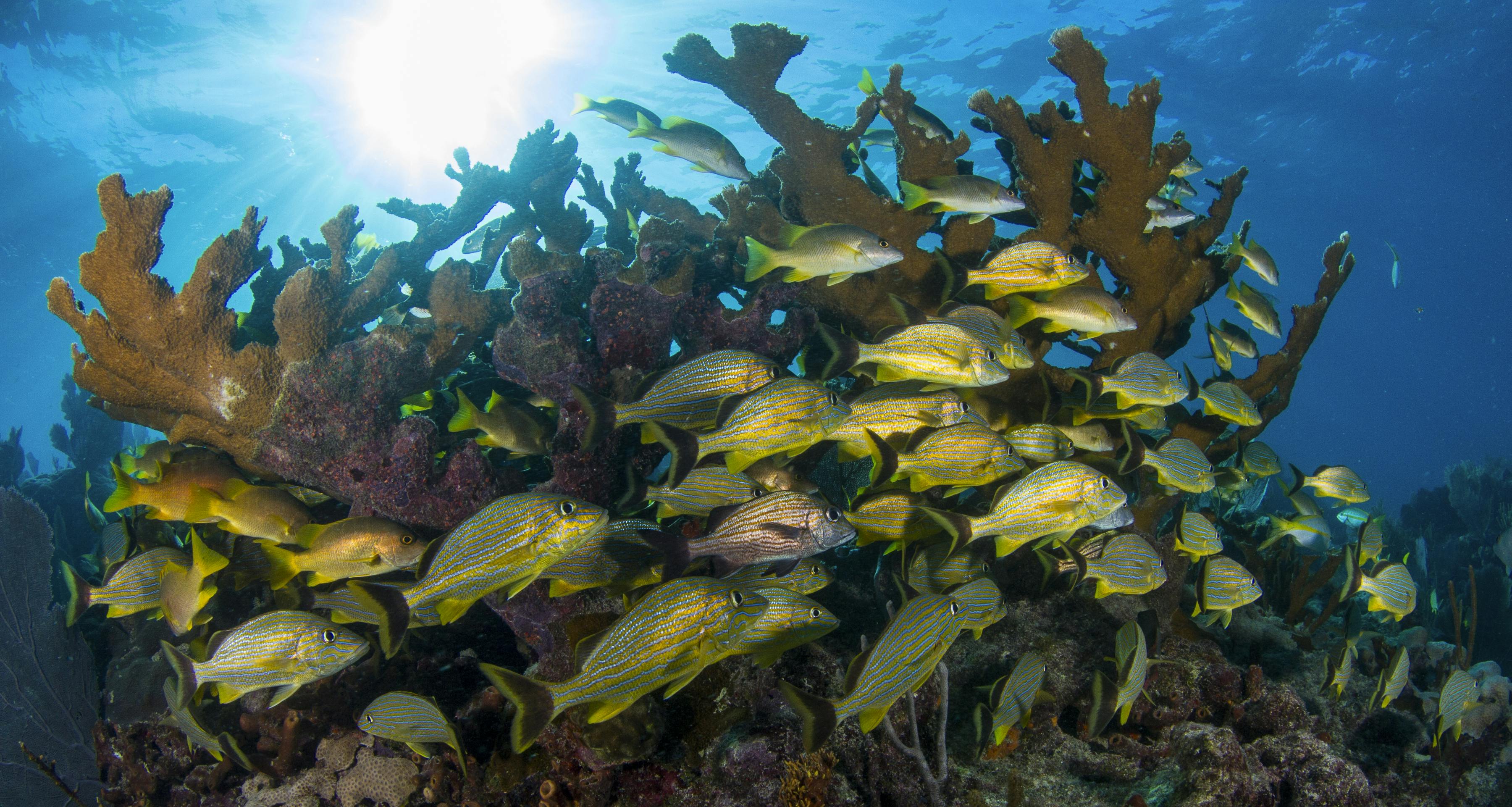
I hope this guide helped you learn more about Florida's native reef sea life. Use the information to enjoy the beauty of each species confidently. Explore Florida's underwater world with this newfound knowledge, and have amazing encounters with its fin-tastic sealife! Happy diving!
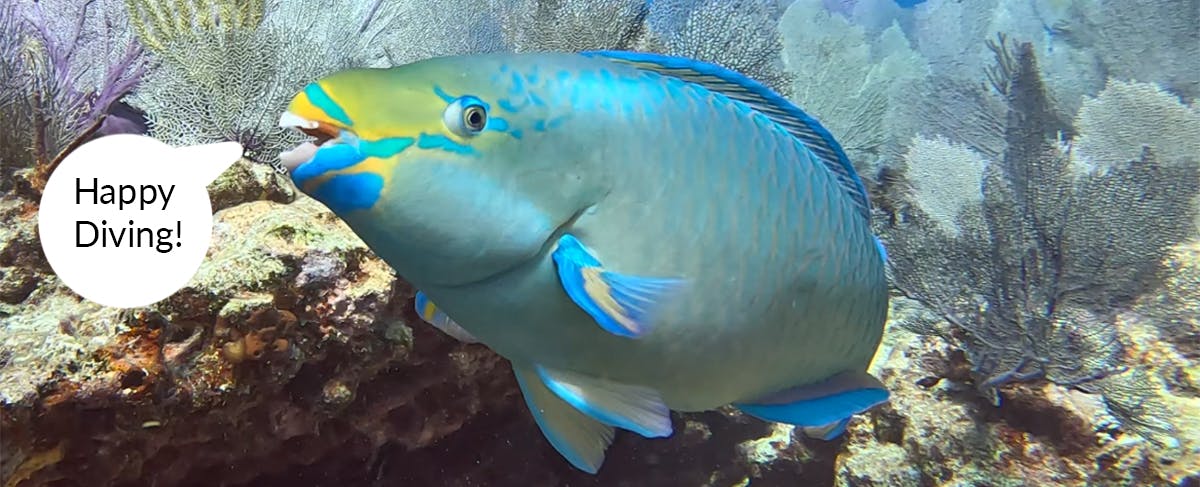
What is a coral reef?
A coral reef is a diverse underwater ecosystem composed of colonies of coral polyps, which are tiny animals that secrete calcium carbonate to form hard skeletons. These reefs provide a habitat for various marine species.
Where is the Florida Reef Tract located?
The Florida Reef Tract is the third-largest barrier reef system in the world and is located along the southeastern coast of Florida, extending from the Miami area to the Dry Tortugas.
Why are coral reefs important for marine life?
Coral reefs provide essential habitats for a wide range of marine species, including fish, mollusks, and crustaceans. They also contribute to the overall health of the ocean by supporting biodiversity and acting as nurseries for many fish species.
What are some common reef fish found in Florida waters?
Florida is home to a diverse array of reef fish, including the colorful parrotfish, angelfish, grouper, snapper, and the iconic clownfish. Each species plays a unique role in the reef ecosystem.
What threats do Florida reefs face?
Florida reefs face various threats, including coral bleaching due to rising sea temperatures, pollution from runoff and coastal development, overfishing, and disease. These factors contribute to the decline of coral health and biodiversity.